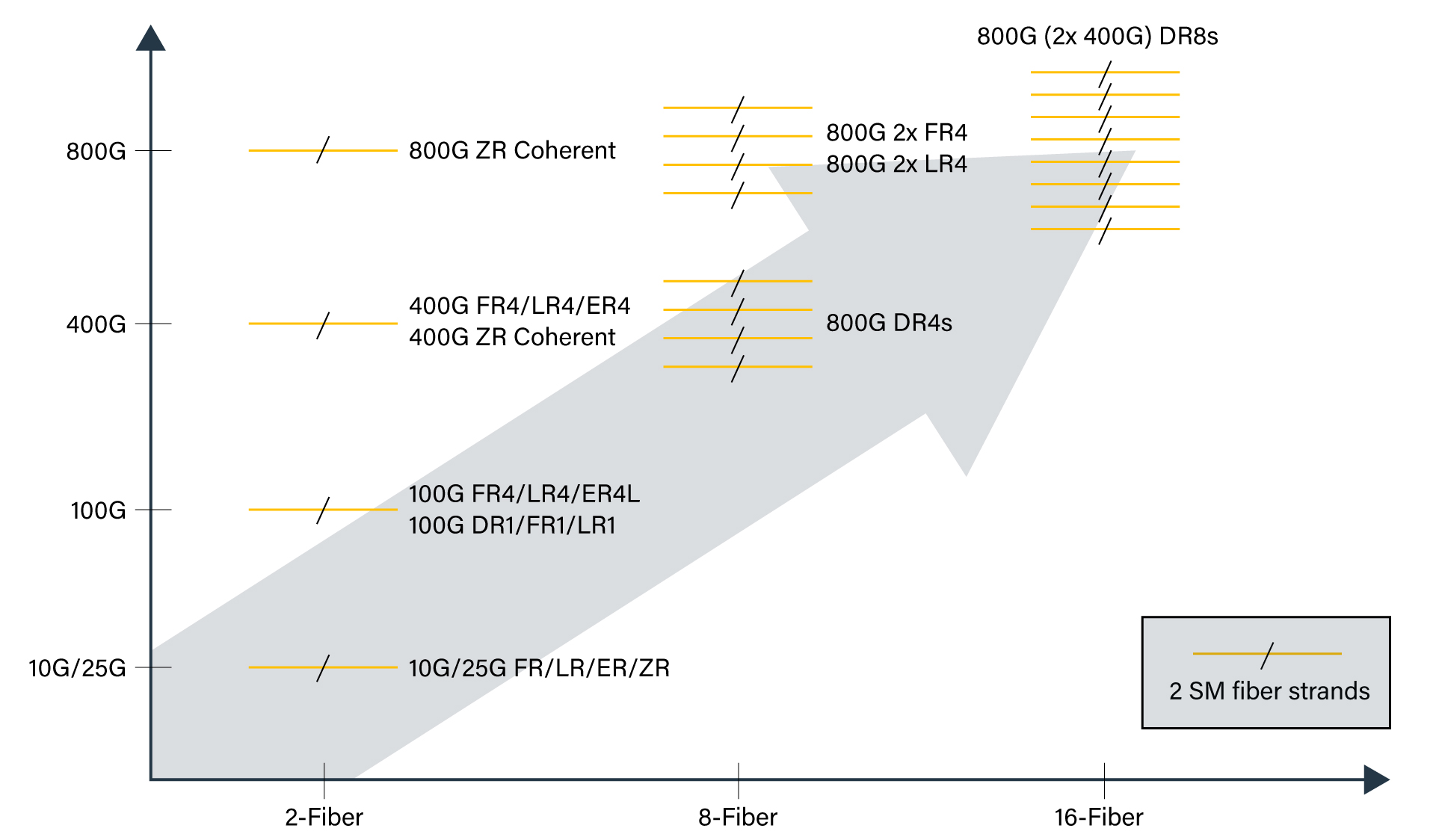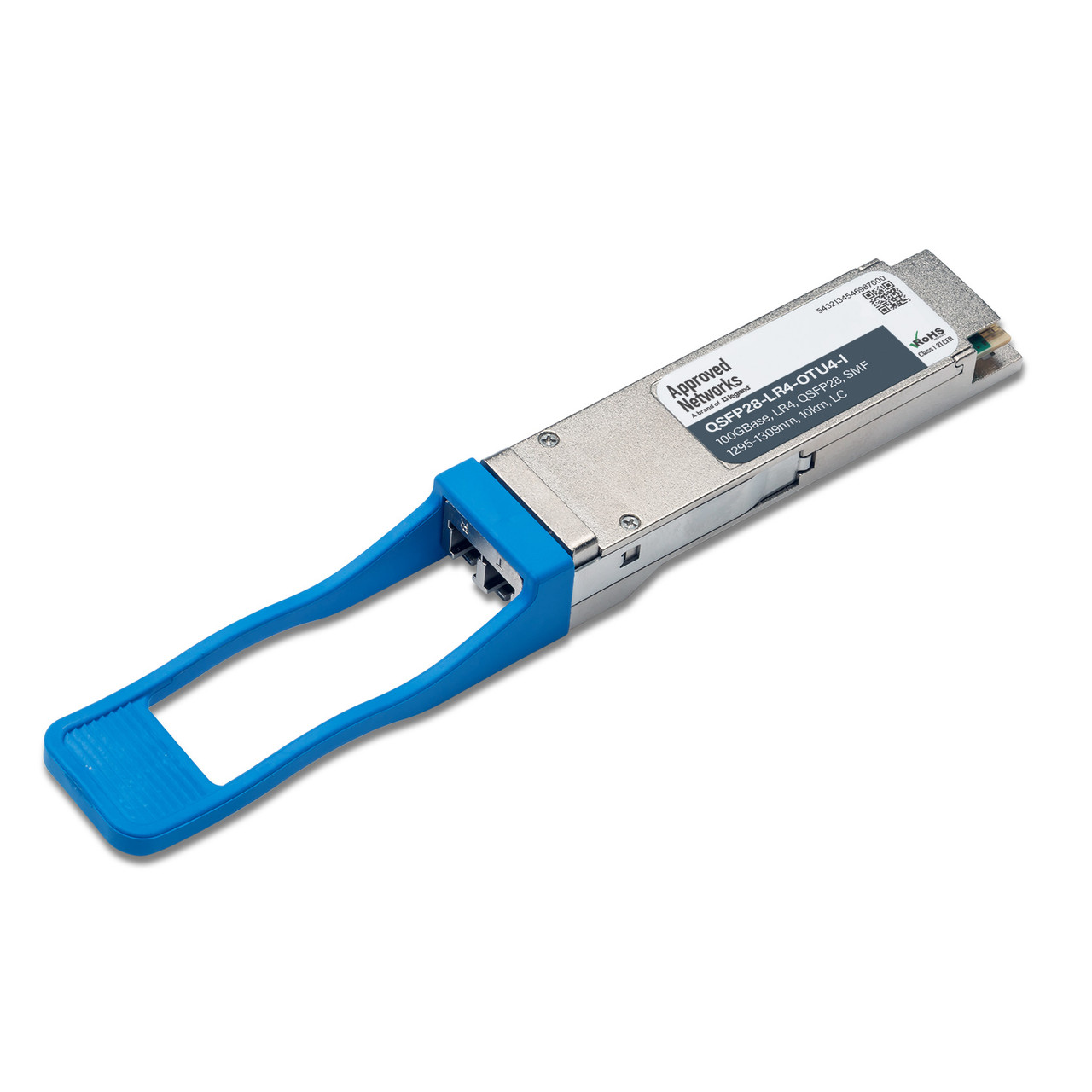A Quick Guide: Scaling Your Data Center Single Mode Fiber Infrastructure to 800G
Posted by Frank Yang on Mar 19, 2024

I wrote a blog, " Building Future-Proof Data Center Multimode Fiber Infrastructure: A Quick Guide to Migrating to 800G," earlier this year. I also wanted to write something about data center single-mode fiber infrastructure.
Single-mode fiber (SMF) has several advantages over multimode fiber (MMF). The benefits include:
- Superior bandwidth
- Longer transmission distances
- Lower signal distortion and loss
- Support for Wavelength Division Multiplexing (WDM) technology
- Future-proofing capabilities
- Immunity to modal dispersion
- Compatibility with single-mode optics
These advantages make SMF the preferred choice for high-performance, long-haul optical communication networks. This capability enhances the overall capacity and efficiency of optical communication systems.
In the ever-evolving landscape of data center networking, the choice of fiber optic technology plays a crucial role in determining performance, scalability, and cost-effectiveness. Over the years, we've witnessed a significant shift in the standards and technologies governing optical transceivers, particularly concerning the number of fibers utilized. Understanding these trends is essential for data center network engineers and architects to make informed decisions when designing and planning fiber plant infrastructure.
From 10G to 100G Optics: The Legacy of Pair-Based SMF Connections
Traditionally, optical transceivers for speeds ranging from 10G to 100G have commonly utilized a pair of SMFs when the distance is beyond hundreds of meters. While effective for lower speeds, this approach encounters limitations as network demands grow, especially with the advent of bandwidth-intensive, port-density applications and the proliferation of data-intensive workloads.
The Trend in 400G Optics: Understanding the Shift
With the deployment of 400G optics, a noticeable divergence in fiber utilization becomes apparent. While some variants, such as 400G FR4, 400G LR4, and 400G ZR coherent optics, continue to adhere to the pair of SMF configurations, others, like the 400G DR4's optics, deviate from this norm by employing four pairs of SMF in a parallel configuration.
The transition to multiple pairs of SMFs for certain 400G optics signifies a response to the escalating bandwidth requirements for server networking. The primary application for 400G DR4s is 4x 100G breakout networking.
The Emergence of 800G Optics: Parallel Single Fiber Connections
Looking ahead, the trend continues with the advent of 800G optics, where most solutions leverage four or eight pairs of SMFs. This approach further underscores the industry's recognition of the importance of scalability and bandwidth optimization in catering to the evolving needs of modern data centers. 800G optics may enable 2x 400G or 8x 100G breakout networks.

Conclusion
As data centers embrace 400G, 800G, and even beyond, understanding the shift from pair-based networking connections to parallel single-mode fiber configurations is crucial. Network professionals must balance cost, performance, and future scalability when designing data center fiber plant infrastructure. By staying informed and making informed choices, they can build robust and efficient networks that meet the demands of tomorrow's data centers.



